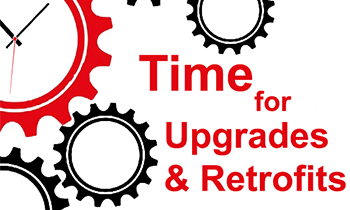How many thermometer types exist in the food industry?

Temperature probes: how many thermometer types exist in the food industry?
Understanding the difference between the various types of temperature measuring devices is key in the food industry. Foodborne illness, which is primarily due to improper cooling of cooked foods, causes 420 thousand deaths per year, taking a toll of $55.5 billion worldwide. Keeping food temperature under control, although not a miracle cure, is thus paramount in the prevention of foodborne illness, and an essential part of food quality assurance. Important consideration must be given to the danger zone, i.e. the temperature range (4°C to 60°C / 40° to 140° F) in which food-borne bacteria can grow. Food manufacturers must pay particular attention to TCS foods (short for Time/Temperature Control for Safety foods), and have to take the temperature at regular intervals to avoid contamination. Long story short, in the food manufacturing industry temperature measuring devices are the tools of the trade.
Nowadays, there exist two major types of temperature measuring devices: contact and non-contact. Contact thermometers are the most widespread among the industry. They measure temperature using the heat transfer phenomenon known as thermal conduction, and require physical contact with the object. On the contrary, non-contact thermometers measure the temperature by reading the level of thermal radiation emitted by the object, and therefore require no physical contact. Widely used in healthcare, non-contact thermometers are becoming increasingly more common in other industries due to recent innovations bringing down the production cost as well as major advancement in reliability.
Contact thermometers: an overview
Contact thermometers appear in various shapes and sizes depending on the sensor type used, i.e. the thermocouple, resistance temperature detector (RTD) or thermistor. Among these, thermocouples are the most common because of their low cost and wide temperature range. That said, the amplitude of the range is not the sole factor to be considered, as there exists an inverse proportionality between temperature range and accuracy, making thermocouples the least reliable sensor of the set. Conversely RTDs, although much more expensive, are way more precise, with an error threshold of just ±0.1 °C.
Speaking of shapes, contact thermometers usually consist of industrial temperature probes that must be inserted in the food sample to check its temperature. Strictly speaking, in fact, a contact thermometer does not measure the temperature of the sample. Instead, it measures its own temperature, which, thanks to thermal conduction, is raised to the level of the sample. Because of this, the process of taking the temperature through a contact thermometer is prone to errors, as the temperature shown might refer to the specific body part where the probe was inserted. Consequently, the temperature must be checked regularly to ensure that the sample has not entered the danger zone.
Non-contact thermometers: what are they?
Non-contact thermometers differ from contact thermometers as, unlike the latter, do not require contact with the food sample. The most common type of non-contact thermometer is the infrared (IR) thermometer. IR thermometers infer temperature from a portion of the blackbody radiation, or thermal electromagnetic radiation, of the object being measured. In physics, all mass spontaneously emits radiations in the infrared spectrum. IR thermometers detect these radiations and extrapolate the temperature by crossing the data with the object’s emissivity, i.e. its effectiveness in emitting energy as thermal radiation. Because of the way they function, non-contact thermometers are more sensitive than their contact counterparts, as the reading may be subject to interference due to the reflection or radiation from a hotter body nearby.
There exists several kinds of infrared thermometers, the most widespread ones being spot infrared thermometers. To tackle the sensitivity issue, new types have been introduced in the healthcare industry, such as infrared scanning systems as well as devices based on IR thermal imaging. More expensive than spot IR thermometers, these new models show even higher accuracy than contact thermometers, as they isolate the object from any external electromagnetic interference. Currently, there is no IR thermometer used in food manufacturing at the industrial level.
CelsiusChecker: bringing superior thermometry to the food industry
CelsiusChecker is one of a kind, as it is the only microwave temperature measuring device used in the food manufacturing industry. Unlike other non-contact thermometers, in fact, it does not track the infrared radiation, but microwave radiation. Unlike contact thermometers, CelsiusChecker does not measure the temperature of the portion of the sample that the probe is inserted in. Rather, by tracking the thermal radiation emitted by the object in its entirety, it measures the equilibrium temperature of the sample. Thanks to this, CelsiusChecker does not require continual testing and does not leave the door open to human error.
With CelsiusChecker, the sample, packaging included, is placed inside a sealed chamber, where an internal antenna checks the microwave radiation emitted by the product. The chamber works as a Faraday cage, shielding its content from all electromagnetic fields. Because of this, CelsiusChecker overcomes the sensitivity issue common to other non-contact thermometers, and therefore provides the most accurate readings in the industry.
The fundamental principles behind CelsiusChecker are explained in seminal publications by Dr. David Land. The accuracy of the device was demonstrated by "Case Study 1: Customer Evaluations of Celsius Midi" (a former model of CelsiusChecker), where several operators proved to be able to use CelsiusChecker with minimal training in real food production environments.


